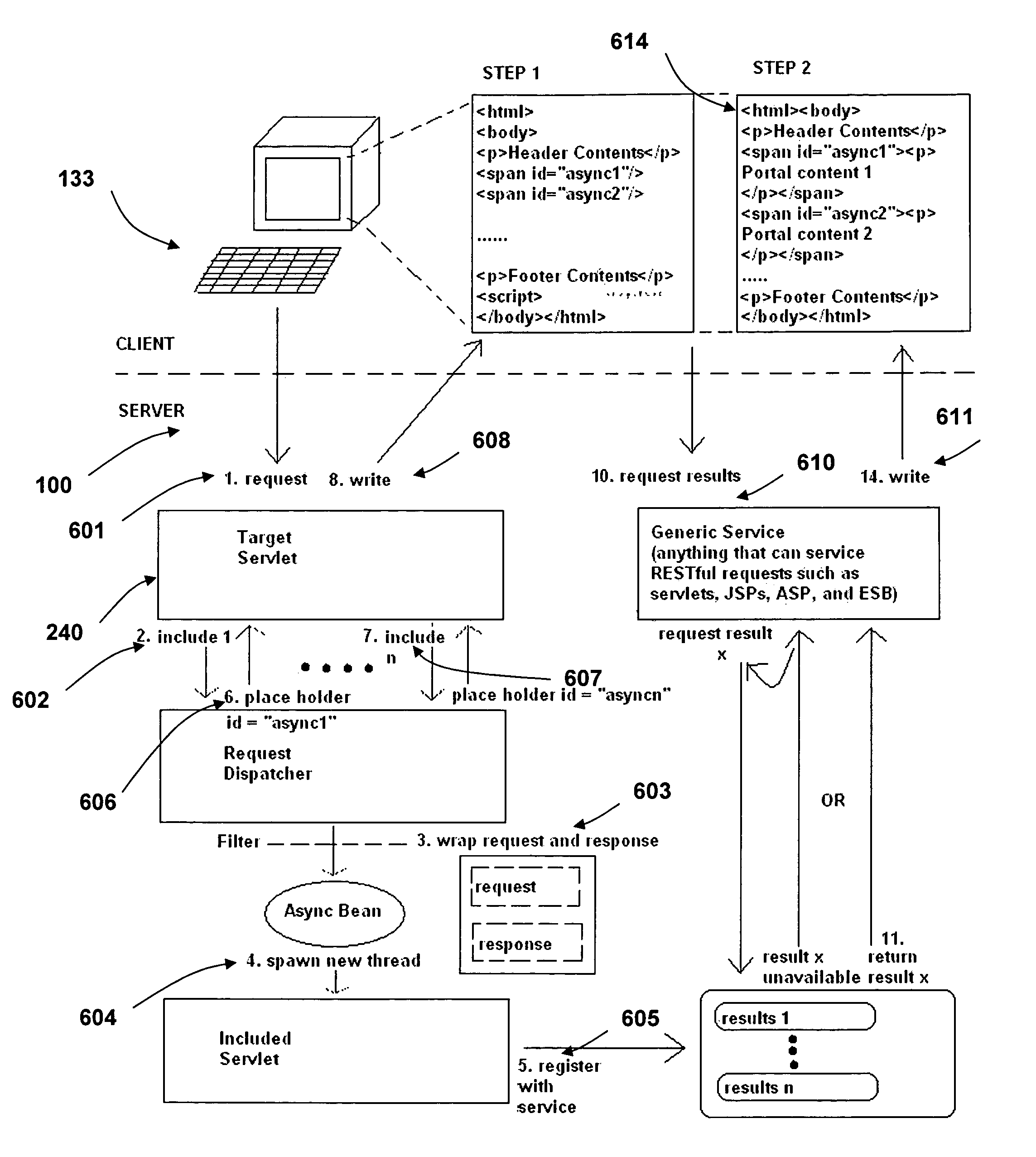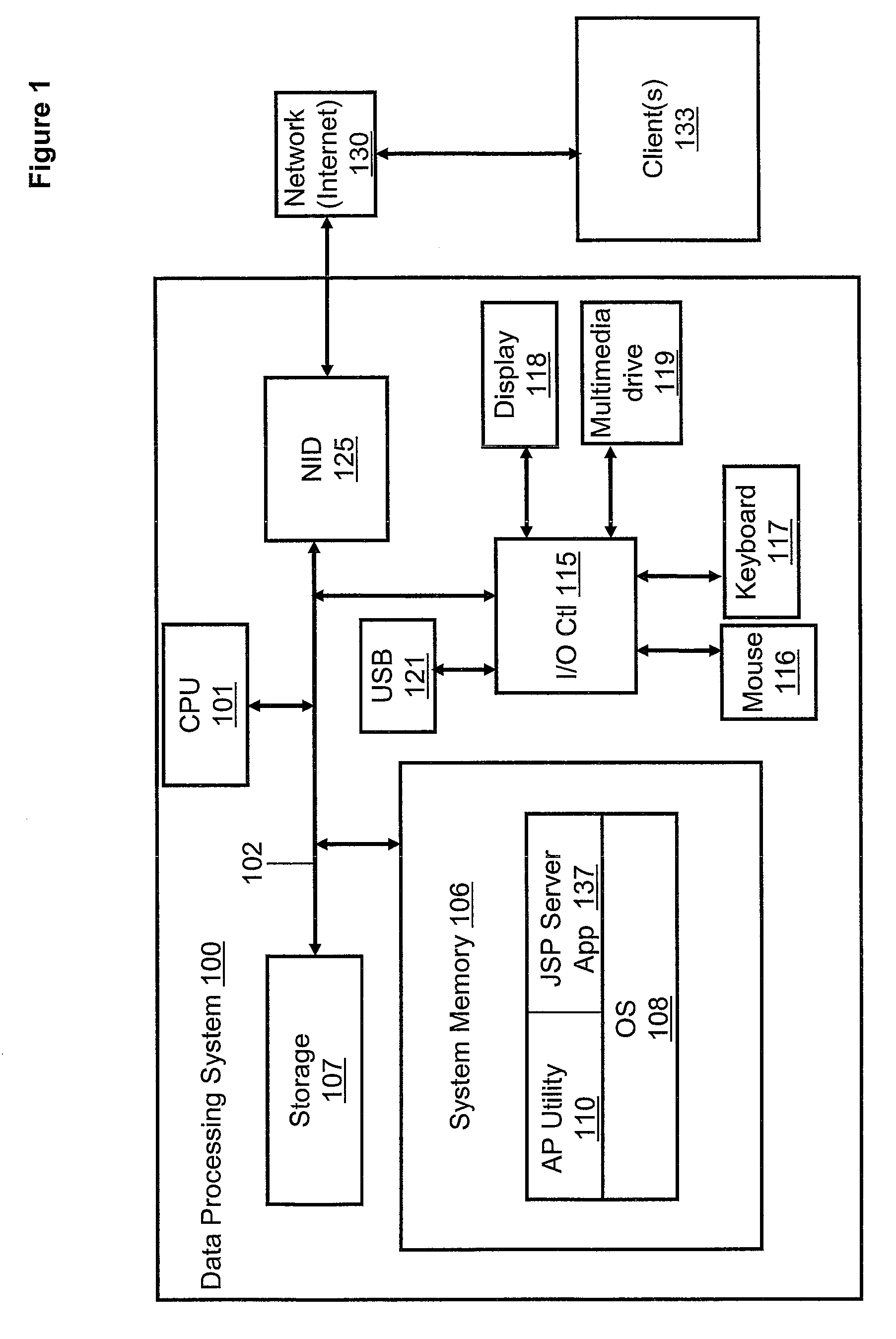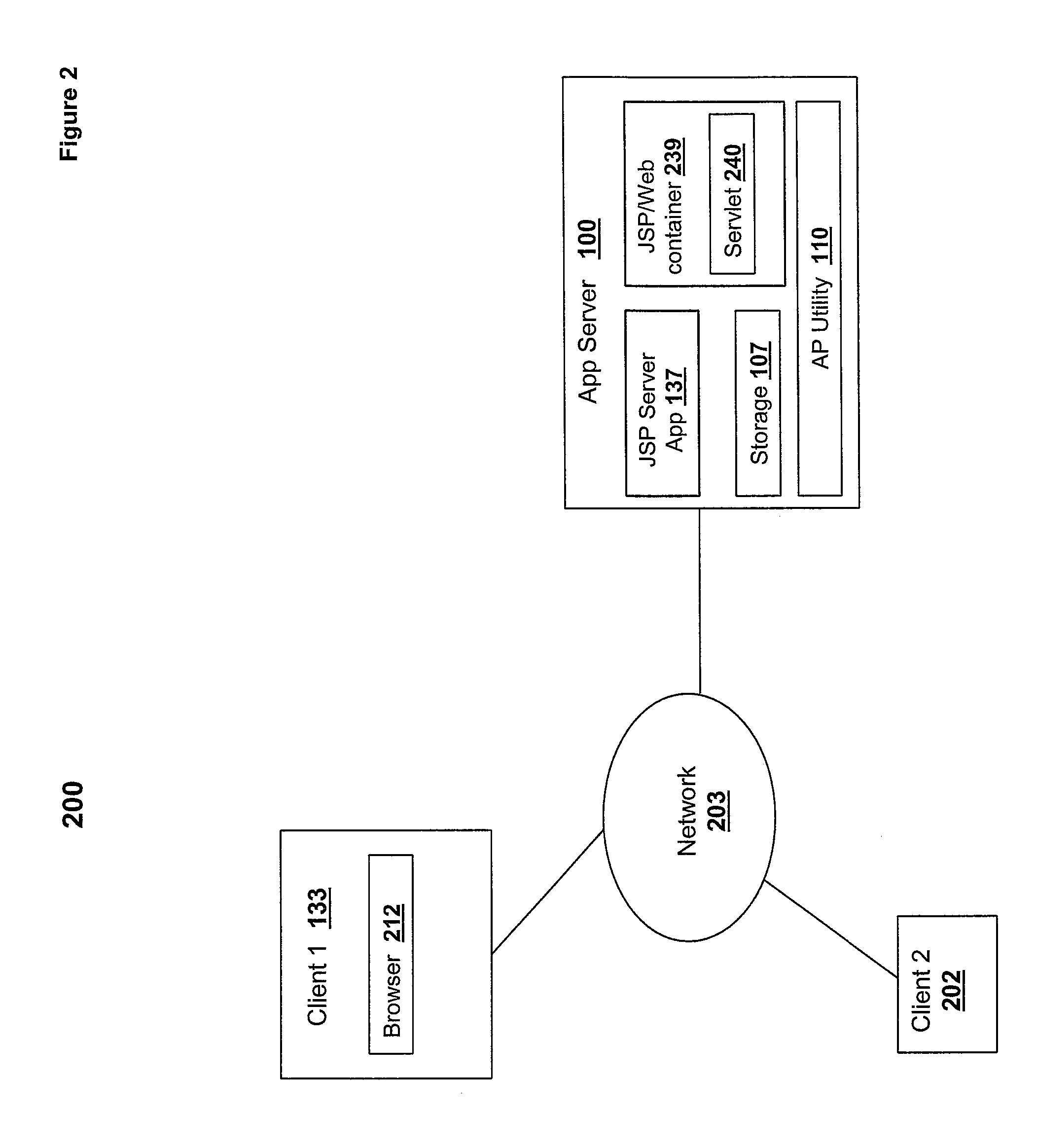Method for client-side aggregation of asynchronous, context-sensitive request operations for java server pages (JSP)
a client-side and context-sensitive request technology, applied in the field of data processing systems, can solve the problems of preventing the client from ideally starting to retrieve response output, limiting the synchronized access for each fragmented request, etc., and achieve the effect of efficient fulfillment of asynchronous java
- Summary
- Abstract
- Description
- Claims
- Application Information
AI Technical Summary
Benefits of technology
Problems solved by technology
Method used
Image
Examples
Embodiment Construction
[0007]Disclosed are a method, system, and computer program product for efficiently fulfilling asynchronous Java Server Page (JSP) requests for dynamic web content in a computer network system. An asynchronous processing (AP) utility pre-defines a number of custom classes to enable the asynchronous processing of requests. A JSP which contains a custom “async:include” tag indicates an asynchronous request for dynamic content. When a set of asynchronous requests are received by an application server, an “AsyncRequestDispatcher” is called to handle the asynchronous processing of each associated request dispatcher include fragment. For each fragment, a separate request thread is initiated. A placeholder corresponding to each “async:include” request is written to a servlet response buffer. The server creates JavaScript for each placeholder and then sends an initial response to the client containing the JavaScript, terminating the original execution thread. The Javascript enables the clien...
PUM
 Login to View More
Login to View More Abstract
Description
Claims
Application Information
 Login to View More
Login to View More - R&D
- Intellectual Property
- Life Sciences
- Materials
- Tech Scout
- Unparalleled Data Quality
- Higher Quality Content
- 60% Fewer Hallucinations
Browse by: Latest US Patents, China's latest patents, Technical Efficacy Thesaurus, Application Domain, Technology Topic, Popular Technical Reports.
© 2025 PatSnap. All rights reserved.Legal|Privacy policy|Modern Slavery Act Transparency Statement|Sitemap|About US| Contact US: help@patsnap.com



